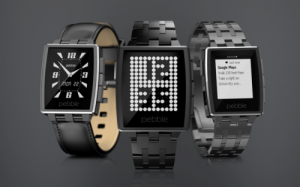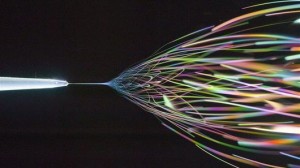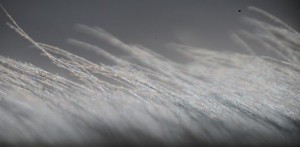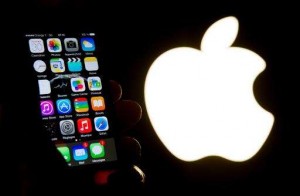
Time’s a ticking for Pebble. As the Palo Alto, Calif., smartwatch maker recently started sending the latest model of its phone-connected watches to those who helped fund its development, analysts cast doubt over its ability to compete with the likes of Apple Inc. and Google Inc.
“They’re in a very difficult position right now,” said technologist Stephen Fluin, an expert on mobile phones and wearable devices. “They were the first smartwatch of any kind of scale, they sold more than a million of the original, and they have a lot of favor in the community. Flash forward to now after a year of Android Wear and the recent launch of Apple Watch, and the realities of their project have become more apparent.”
According to analysts, Pebble faces two challenges: a lack of resources compared with its competition and an ongoing struggle to define its audience.
With the former, Pebble was initially funded through crowdfunding platform Kickstarter, where it raised $10.3 million in 2012, making it one of the most successful fundraising campaigns of its kind. But compared with Apple and Google – two tech behemoths with billions of dollars at their disposal – Pebble faces an uphill battle in recruiting the talent, developing the technology and investing in the marketing required to compete at the same level.
Analysts have said smaller smartwatch makers don’t necessarily have to compete head to head with the likes of Apple and Google to be successful and profitable. But to remain relevant, they do need to clearly differentiate themselves – and analysts aren’t convinced Pebble has done that.
Apple and Google have positioned their watches as luxury fashion items as opposed to geeky gadgets, pursuing a more mainstream audience. Pebble has been less clear about who its watch is for.
The Pebble isn’t as refined as Apple or Google’s offerings, said Dan Ward, co-founder of app development firm Detroit Labs, but it’s also not as utilitarian as Garmin’s fitness watches, which makes it a difficult sell in an increasingly crowded marketplace.
“Design is just as important as what’s under the hood,” Ward said. “When Motorola first launched its smartwatch, there was extra buzz around the Moto 360 because it’s gorgeous. Then with Apple, we saw it strategically launch in six designer boutiques around the world, which is the first time anyone has done that.”
The smartwatch race looks increasingly like a David-versus-Goliath situation, with Canalys analyst Daniel Matte saying it’s “basically impossible” to compete with Apple, Google and Samsung, which have “many orders of magnitude more resources.” But Pebble isn’t necessarily out of the race.
Pebble has distinct advantages over the main competition, Matte said.
Being created by neither Apple nor Google means Pebble’s watches are compatible with both iOS and Android, giving users the ability to switch between phones without having to change watches.
The Pebble also has a longer battery life, lasting up to seven days on a single charge compared with the Apple Watch and Android Wear, which last one to two days.
Pebble’s watches also lack the bells and whistles of its competition, which, while perceived as a weakness for some, could be one of its strengths, Matte said.
“It’s a very simple, streamlined product,” he said. “They’ve made something that’s not intrusive to your life.”
The lack of intrusiveness is what appeals to Pebble user Tim Shrimpton, 32, a San Francisco Bay Area resident who backed the original Pebble on Kickstarter.
“The thing I like about it is it’s first and foremost a watch,” Shrimpton said. “The screen is always on. You don’t have to do anything to it. Even having to flick your wrist to get it to turn on (as is it the case with the Apple Watch) seems counterintuitive.”
Some watch wearers find the feature-packed offerings from Google and Samsung off-putting, and have gravitated to Pebble’s minimalist design.
“I don’t want a million features – long battery life and being a watch first appeal to me,” said Pebble user Aaron Crocco, 35, of Selden, N.Y. “Pebble goes with ‘Less Is More,’ and I appreciate that.”
Pebble Chief Executive Eric Migicovsky said Apple’s and Google’s foray into the smartwatch market has helped the company by raising awareness of smartwatches, which has led to consumers seeking out alternatives.
“We’re not going after that luxury jewelry market like Apple is,” Migicovsky said. “The original Pebble was simple. We didn’t say it was a revolutionary device that would change your life. It did a couple of things like text messages, email, calls, the ability to control your music, and did them well, and I think it clicked with our customer base.”
The latest Pebble watch, the Pebble Time, which recently shipped to Pebble’s Kickstarter backers and will soon be available to the wider public, sticks to Pebble’s simplicity ethos by further streamlining the experience. Instead of loading the watch with dozens of individual apps, the Pebble Time lets users organize and view information chronologically in a timeline format.
Pebble also plans to soon offer “smartstraps,” wrist straps with different functions such as GPS and heart rate monitoring that users can swap onto their device.
Like many of Pebble’s other features, the smartstraps are developer friendly, and Pebble has even posted 3-D printing instructions online for building a Pebble smartstrap, encouraging developers to make their own.
Pebble’s openness to developers is another strength. The company stands in stark contrast to Apple, which is notoriously cagey about its products, going so far as to reject apps that mention their compatibility with other platforms such as Pebble.
Fluin believes Pebble can stay in the race if it can clearly carve out a niche for itself. One idea is to position itself as a geek product that appeals to the do-it-yourself crowd who like making or tinkering with gadgets, he said. Or with its lower price (Pebble’s original model starts at $99), it could appeal to children and families, Ward said.
Matte said the company could even pivot to being a software company that focuses on making apps for smartwatches.
Migicovsky has given no indication that Pebble will point itself in either of those directions, but Matte says “it’s a plausible survival strategy.”
Whatever direction it does choose, analysts agree it needs to be more bullish about it.
“With the mobile and wearable landscape shifting as rapidly as it is, you’re either growing and succeeding, or you’re fading and dying,” Fluin said. “With Pebble … I don’t think they’re out yet.”
References:http://phys.org/





